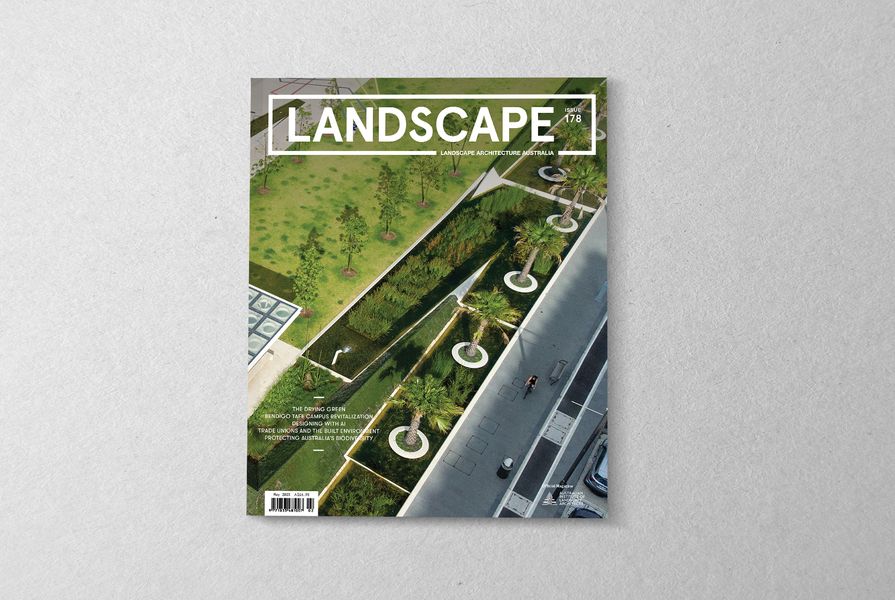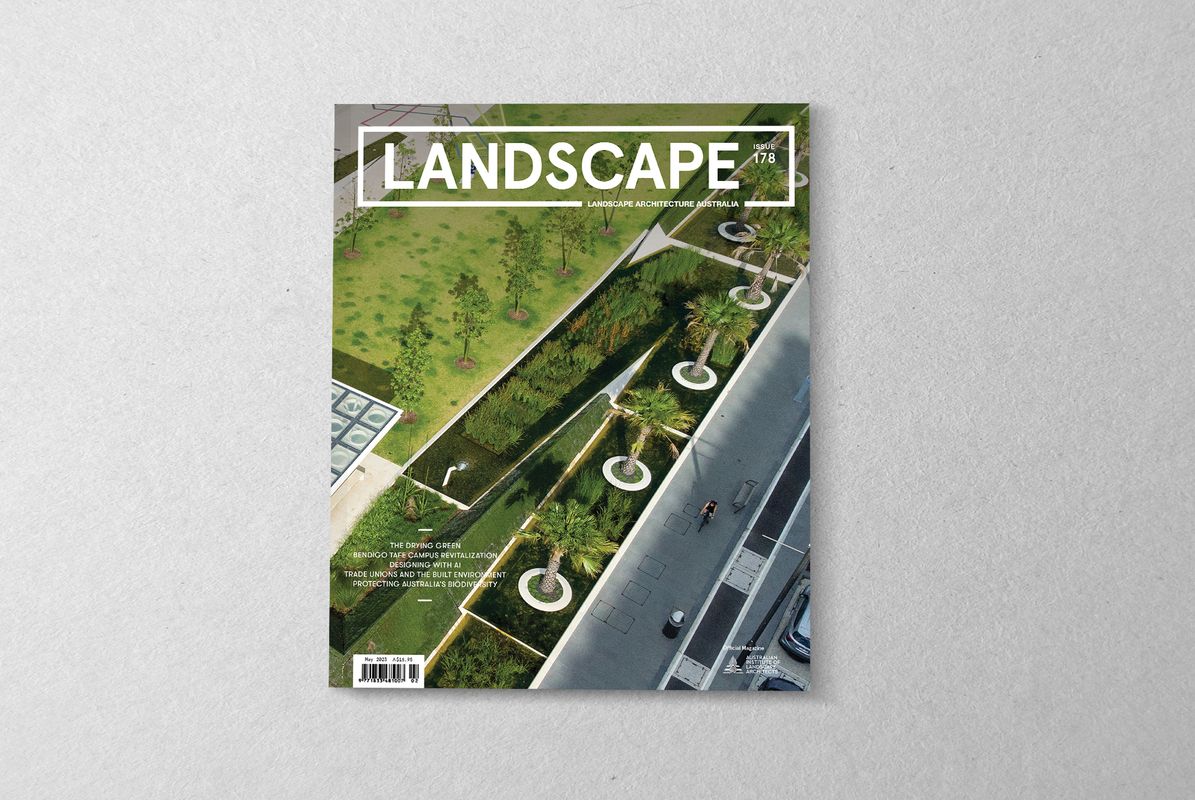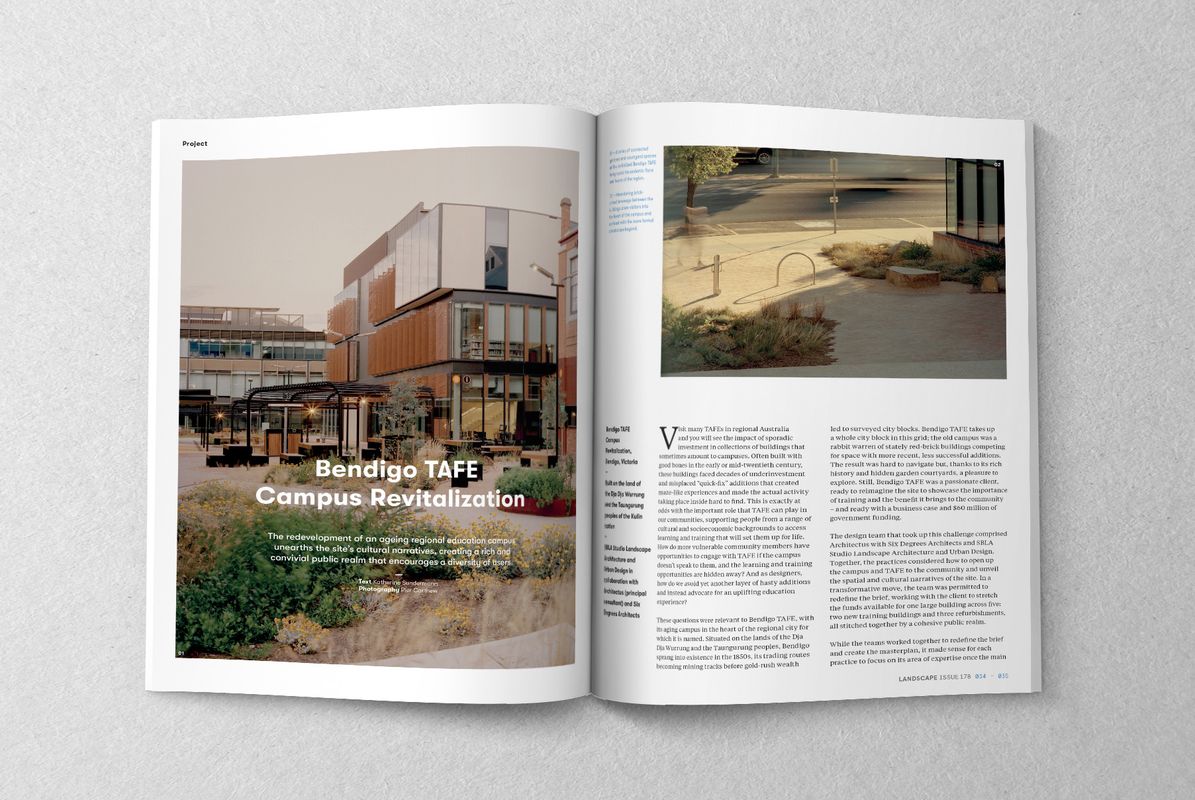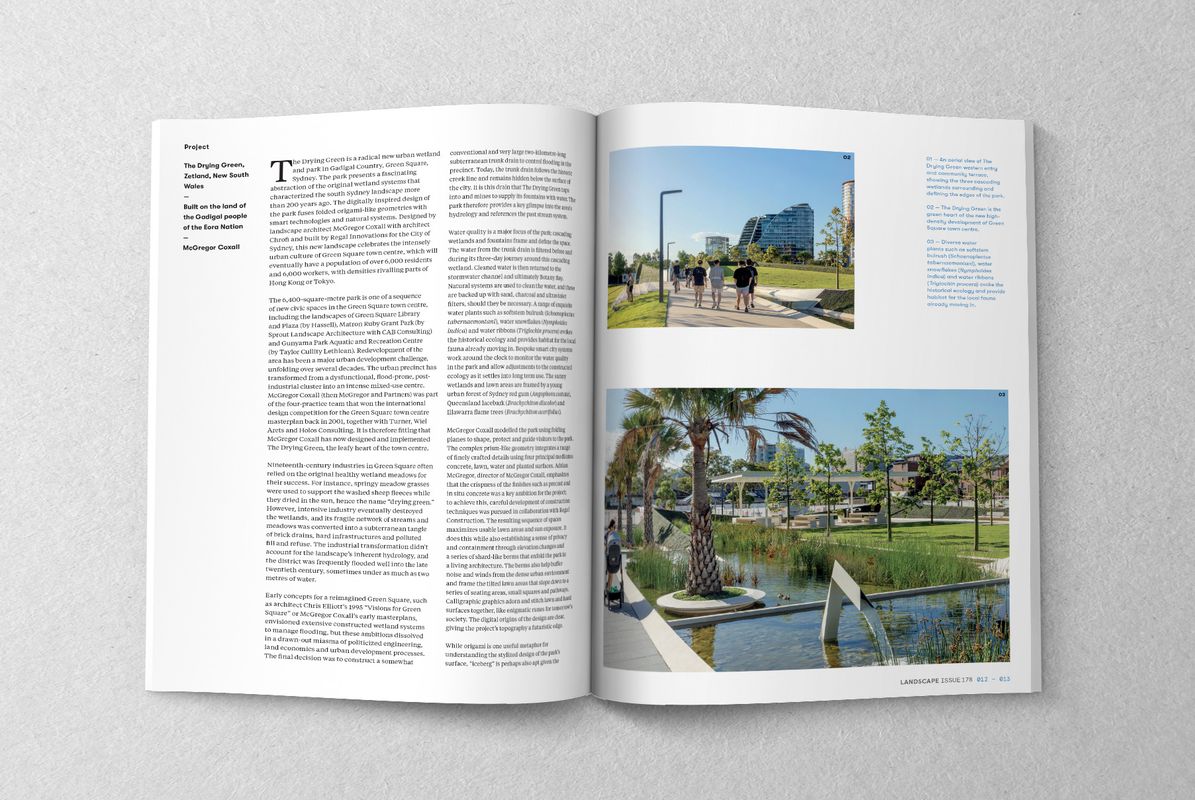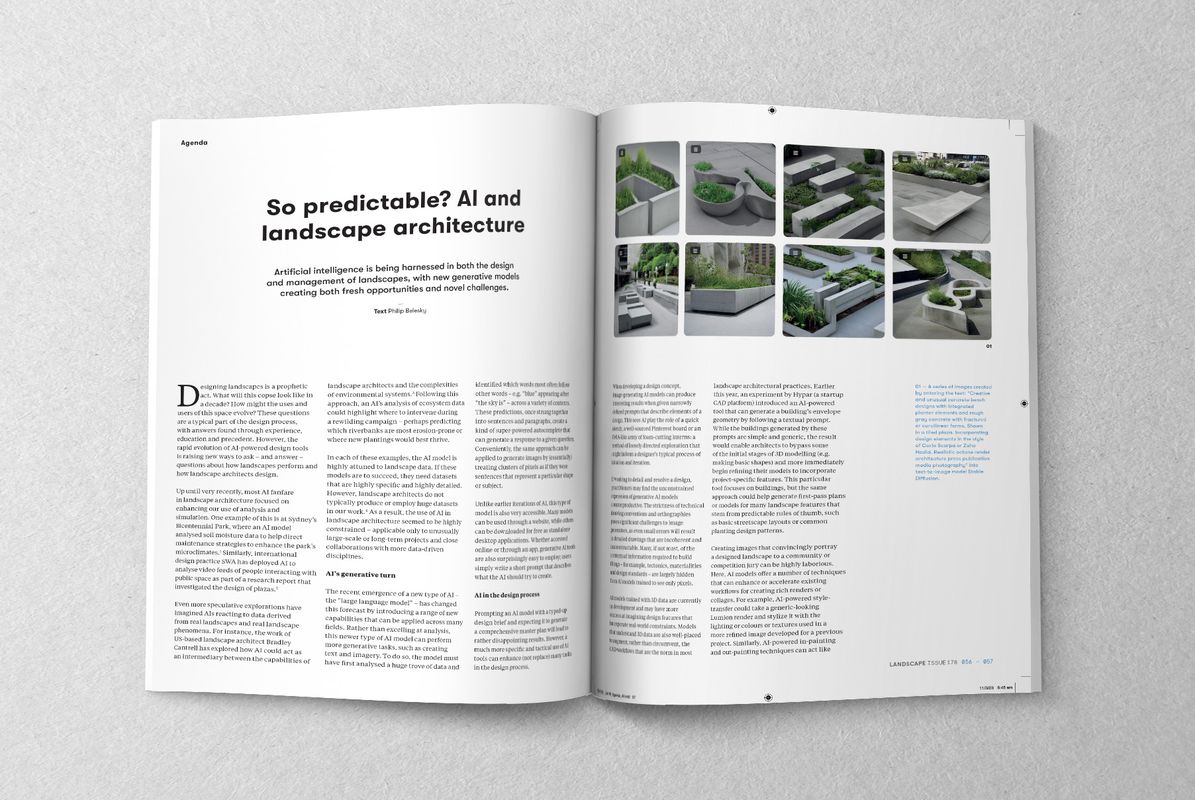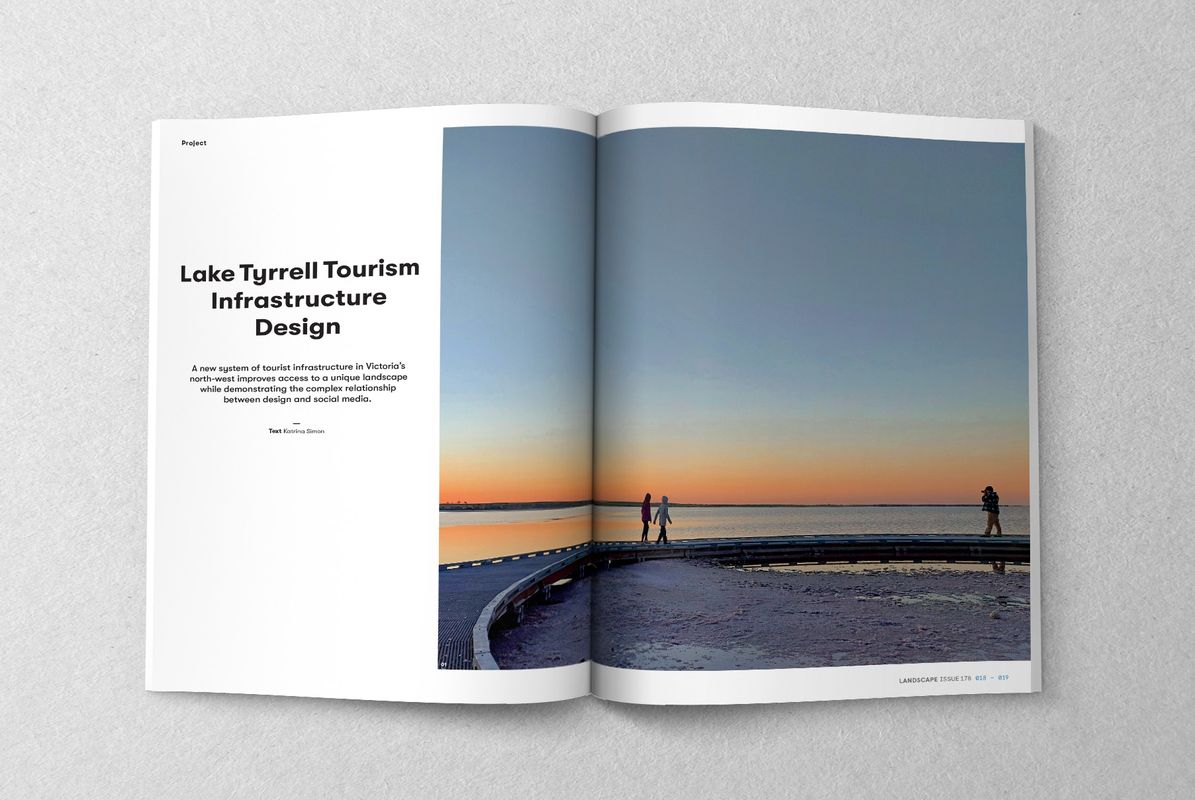Many of the articles in our May issue of Landscape Architecture Australia consider how technology is being integrated into design practice, both in the built forms and outcomes, and as part of the design process.
The Drying Green is a 6,400-square-metre park that forms part of a series of new civic spaces in the Green Square town centre in Sydney’s south. Scott Hawken writes that the project is “a work of cyborg landscape architecture” that blurs the distinction between human and non-human nature. “This is an engine crafted to function like a park, with its metallic fountains and digital aesthetic,” he observes.
Katrina Simon’s visit to Lake Tyrrell in Victoria’s north-west, on the other hand, leads to a reflection on the complex relationship between social media and landscape design, and different ways of experiencing landscapes. As she notes in her article: “Social media – and Instagram in particular– are frequently invoked as signifiers of self-regarding shallowness and artificially enhanced conventional physical beauty … Yet [the platform’s] initial popularity was in part allied to a combination of colour palette and format that lent itself to a type of landscape imagery commonly associated with distance and nostalgia. At the same time, [it] provides a distinctively visual platform where designers and makers can post their design journeys, explorations and preferences and share their insights and experiments with a broader community.”
Meantime in the digital realm, the steady evolution of artificial intelligence models is impacting design processes. Philip Belesky’s article considers these developments and speculates on what deeper impacts these may have on the nature of landscape architecture practice. How we can speculating on the future is also the theme of a recent book, Designing landscape architectural education: Studio ecologies for unpredictable futures, edited by Rosalea Monacella and Bridget Keane, and reviewed in this issue by Martin Bryant.
The collection of articles in this issue provide a launching point for discussion around the future of our cities. We hope you enjoy the read.
In this issue:
-
Viewpoint. A message from AILA National Director Katie Earle.
-
The Drying Green. A new park in Sydney’s south cleanses urban waters using both natural and high-tech systems. Review by Scott Hawken.
-
Lake Tyrrell Tourism Infrastructure. A new system of tourist infrastructure in Victoria’s north-west improves access to a unique and mesmerizing landscape. Review by Katrina Simon.
-
Rocks on Wheels. At Melbourne’s Southbank, a space for risky play challenges the conventions of playgrounds, public art and landscape projects. Review by Bede Brennan.
-
Bendigo TAFE Campus Revitalization. The redevelopment of an aging regional education campus unearths the site’s cultural narratives. Review by Katherine Sundermann.
- So unpredictable? Artificial intelligence models are creating novel opportunities and challenges for design practice. Article by Philip Belesky.
- Planning for biodiversity. Creating a more robust future requires rethinking how we consider, design and plan future conservation areas. Article by Simon Kilbane.
-
Building worker solidarity. Unpacking the history of worker power in Australia’s built environment professions. Article by Bonnie Gordon and Julia McCann.
-
Circling back to circularity. Experiments with bio-based construction materials and phytoremediation techniques could inform how we design a resilient future. Article by Lucy Salt.
-
Lofi landscapes: Straub Thurmayr. The work of the Manitoba-based landscape architecture practice combines landscape architecture, gardening, community work and education. Interview by Alex Breedon and Liam Mouritz.
-
Fieldtrip: Grampians Peaks Trail. A four-day hike along this dramatic new walk reveals a trail well grounded in place. Article by Matt Caldar.
-
2022 Landscape Student Prize. Presenting the winners of the 2022 Landscape Student Prize.
- Designing landscape architectural education. A recent book explores how nurturing knowledge and skills in design education can assist in designing an unpredictable future. Review by Martin Bryant.
- Plants: past, present and future. Unpacking the latest book in the “First Knowledges” series edited by Margo Neale. Review by Jock Gilbert.
Source
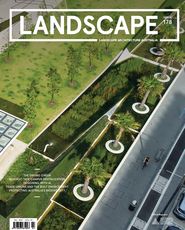
News
Published online: 26 Apr 2023
Words:
Emily Wong
Images:
Cover image by Simon Wood,
Landscape Architecture Australia
Issue
Landscape Architecture Australia, May 2023

